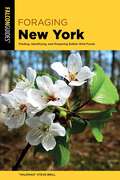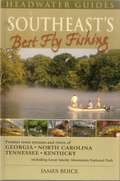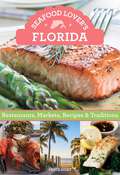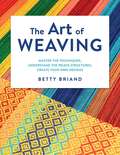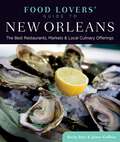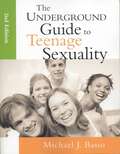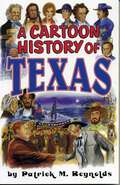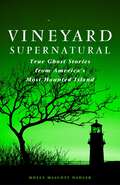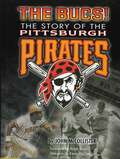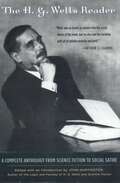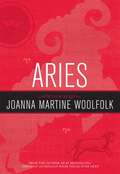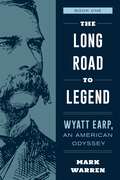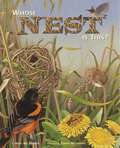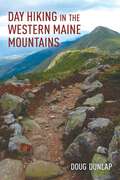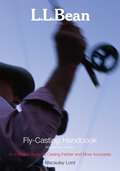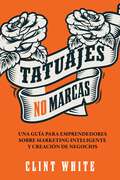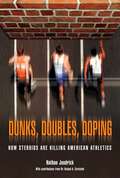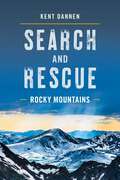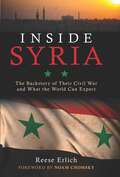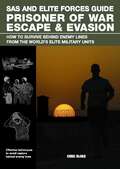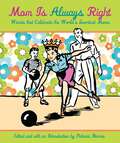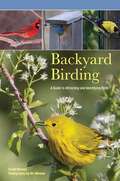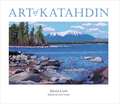- Table View
- List View
Foraging New York: Finding, Identifying, and Preparing Edible Wild Foods (Foraging Series)
by "Wildman" Steve BrillFrom beach peas to serviceberries, cattails to burdock root, and ostrich ferns to sea rocket, Foraging New York uncovers the edible wild foods and healthful herbs of the Empire State. Helpfully organized by food group and season, this book is an authoritative guide for nature lovers, outdoor enthusiasts, and gastronomes. Inside you'll find: • Species ranging from herbs to trees • Expert advice on identifying, preparing, freezing, drying, storing, and cooking wild edibles • Tools, techniques, and foraging etiquette • Recipes to prepare at home and on the trail
Southeast's Best Fly Fishing
by James BuiceNew series of fly fishing guides covering only the best waters, written by local experts Detailed maps created with latest GIS mapping software--more accurate than any previous fly-fishing guidebook maps; it covers trout streams and rivers of Georgia, North Carolina, Tennessee, and Kentucky Includes Great Smoky Mountains National Park, the nation's most popular national park with more than 9 million visitors per year Whether you are flying through Atlanta on business (the Chattahoochee River provides superb fishing just outside of city limits) or taking an extended trip into the backcountry of Great Smoky Mountains National Park, this guide gives you the information you need for a successful fishing trip. With stunning photos, detailed hatch charts for each river, photos and recipes of the most effective fly patterns, and insider information from local guides and outfitters, this book is an essential reference for the south's best trout fishing.
Seafood Lover's Florida: Restaurants, Markets, Recipes & Traditions
by Bruce HuntSeafood Lover's Florida covers the culture of seafood in the Sunshine State and features the history of the cuisine, recipes both original and contributed by restaurants, and where to find, and most importantly consume, the best of the best local offerings. The book also showcases photos of recipes, techniques, and equipment as well as shots of the interiors and exteriors of the restaurants help make the book an essential reference tool.
The Art of Weaving: Master the Techniques, Understand the Weave Structures, Create Your Own Designs
by Betty BriandThis comprehensive guide to floor loom weaving begins with the basics—parts of the loom, how to wind your warp and dress your loom; how to read and weave drafts—but then goes so much farther, explaining the different types of weaves and how to read and weave from charts, and exploring a variety of weaves in depth. The author covers each topic in detail, with illustrations, photos, and charts to guide you. The first half of the book is devoted to the basics of weaving, and the second part teaches a variety of weave structures and how to use them and adapt them to whatever you want to make. The Art of Weaving is extensive in its scope, and a reference book appropriate for all skill levels.* Preparing your yarn and threading your floor loom* Understanding and working from drafts* Exploring weave structures* Finishing* Troubleshooting
Food Lovers' Guide to® New Orleans: The Best Restaurants, Markets & Local Culinary Offerings (Food Lovers' Series)
by James Gaffney Becky RetzSavor the Flavors of New Orleans You can&’t keep a great food city down. The jazz is still swinging, the locals are still smiling, and the heart of New Orleans—its restaurants, kitchens, cooks, and the delicious meals they create—is beating stronger than ever before. In Food Lovers&’ Guide to New Orleans, seasoned food writers Becky Retz and James Gaffney share the inside scoop on the best places to find, enjoy, and celebrate these culinary treasures. A bounty of mouthwatering delights awaits you in this engagingly written guide.With delectable recipes from the renowned kitchens of the city&’s iconic eateries, diners, and elegant dining rooms, Food Lovers&’ Guide to New Orleans is the ultimate resource for food lovers to use and savor. Inside You'll Find: Favorite restaurants and landmark eateries • Specialty food stores and markets • Farmers&’ markets and farm stands • Food festivals and culinary events • Recipes from top New Orleans chefs • The city&’s best cafes, taverns, and wine bars• Local food lore and kitchen wisdom
Gardening in the South: Vegetables & Fruits
by Donald M. HastingsThis second volume in the Gardening in the South series gives readers a complete course in growing fruits and vegetables.
The Underground Guide To Teenage Sexuality
by Michael BassoThe classic guide to teen sexuality updated and expanded with information on sexually-transmitted diseases; contraception; sexual abuse; healthy relationships; hotlines and resources; and much more.
Cartoon History of Texas
by Evault BoswellBased on a 1912 publication about Texans who fought for the South in the Civil War, Texas Boys in Gray presents a collection of fascinating remembrances of those who were there. Sometimes humorous and sometimes heartbreaking, the experiences of these men are documented as a tribute to Texas war veterans. Texas Boys in Gray captures, in their own words, the patriotism, the fear, the confusion, the bravery, the terrible wounds, the desperate hunger, the camaraderie, the horrible prison conditions, and the joyful reunions that were all part of that historical time.
Vineyard Supernatural: True Ghost Stories from America's Most Haunted Island
by Holly NadlerHolly Nadler, the ghost lady of Martha's Vineyard, won lots of attention for her collections of ghostly accounts on the island in Haunted Island. Now, in her second volume, Nadler brings her sassiness and spunk to investigating and delivering the dirt on even more eerie happenings on an island that is home to the rich, famous — and, yes, the otherworldly. In fact, she says, Martha's Vineyard is America's most haunted island.
The Bucs!: The Story of the Pittsburgh Pirates
by John McCollisterEach generation of Pirate fans has been blessed with a pantheon of heroes: Honus Wagner, Pie Traynor, Bill Mazeroski, Roberto Clemente and Willie Stargell.
The H.G. Wells Reader: A Complete Anthology from Science Fiction to Social Satire
by John HuntingtonThis collection, the first of its kind, indicates the full breadth of Well's visionary views and social commentary.
Aries: Sun Sign Series
by Joanna Martine WoolfolkYour Sun sign (often referred to simply as your sign) is the zodiac sign the Sun was traveling through at the time of your birth. Your Sun sign is the most important and pervasive influence in your horoscope and in many ways determines how others see you. It governs your individuality, your distinctive style, and your drive to fulfill your goals. It symbolizes the role you are given to play in this life. It&’s as if at the moment of your birth you were pushed onstage into a drama called This Is My Life. In this drama, you are the starring actor—and your sign is the character you play.This elegant little volume is packed with what your Sun sign tells you about you. You&’ll read about your many positive qualities as well as your negative issues and inclinations. You&’ll find insights into your power, potentials, and pitfalls; advice about relationships, love, and sex; clarification on erogenous zones and how you combine romantically with other signs; guidance regarding career, health, and diet; and information about myriads of objects, places, concepts, and things to which you&’re attached. You&’ll also find topics not usually included in other astrology books—such as how you fit in with Chinese astrology and with numerology.
The Long Road to Legend: Wyatt Earp, An American Odyssey Book One
by Mark WarrenEvery story has its beginning. Every great man starts as a boy. Every boy must stumble.In the years following the Civil War an unsophisticated Iowa farm boy feels the inner fire of ambition but struggles to find a direction that matches his rough-hewn temperament. Because of his physicality, confidence, and a willingness to exercise deliberate courage, he will eventually find his place at the margin of respectability and be admired by his peers. But first he has some tough dues to pay. His name is Wyatt Earp.In his young adult years Earp was many things—farmer, wagon train hunter, freight hauler, stage driver, railroad wrangler, husband, constable, wood splitter, accused horse thief, brothel bouncer, buffalo hunter, gambler, and lawman—most of this in the "new" and raw land of America's untapped West. The possibilities seemed endless for Wyatt, but history remembers him as a peace officer, a role he never wanted but that fate forced upon him. He was that good at it. His name will always be spoken anytime that a conversation arises about justice vs. law and order . . . and how those American commodities do not always balance on the scales of a courtroom bench.
Whose Nest Is This?
by Roermer Mclennan"Springtime is here. There is work to be done, as animal parents make nests for their young. Using pebbles, or woodchips, even mud, spit, and leaves-many creatures make nests…Whose nests are these?" So begins this spirited, rhyming, picture book that describes in riddle-form the many types of nests animals make, from the tiny ruby-throated hummingbird to the imposing sea turtle. "There are mammals and reptiles and insects who nest. Birds, too, build unique nests that suit them the best. Some nests provide shelter, and some are for show, but the best nests are those in which young babies grow!"
Day Hiking in the Western Maine Mountains
by Doug DunlapThe mountains and foothills of western Maine are a hiker's paradise, featuring some of the finest hiking terrain in the Eastern United States. Join Registered Maine Guide Doug Dunlap on more than two dozen excursions. Hikes range from quiet stream-side rambles and waterfall hikes to gut-busting ascents to high peaks with breezy open summits. There are short walks that will take an hour or less, and there are day-long treks, all rounded out with maps, practical tips and safety advice, and even suggestions for hiking with kids and dogs.
L.L. Bean Fly-Casting Handbook, Revised and Updated (L. L. Bean)
by Macauley LordNow updated, including full-color illustrations, The L.L. Bean Fly-Casting Handbook is a must-have for all beginning and intermediate fly casters. Based on the winning methods of the L.L. Bean Fly-Fishing Schools, sections include: The Eleven Habits of Highly Effective Casters, The Basic Four-Part Cast, The Essential Roll Cast, Getting More Distance, Casting into the Wind, Double Hauling, and more. Anglers will find this accessible guide helpful to becoming a more accomplished fly caster.
Tatuajes, No Marcas
by Clint White&“…ilumina uno de los aspectos más incomprendidos del lanzamiento de una empresa y debería permitir a innumerables emprendedores dormir mejor por la noche&”. — Scott Stedman, emprendedor en serie y autor de Mouse, una novela. (Grupo de libros Greenleaf) Ya sea que sea un emprendedor en ciernes, una pequeña empresa establecida, una persona influyente en las redes sociales, un especialista en marketing de una gran corporación (o algo intermedio), la idea de ser una "marca" se considera esencial para el desarrollo de una estrategia de marketing sólida. Pero ¿y si no lo es? En Tatuajes, no marcas: una guía para emprendedores sobre marketing inteligente y creación de negocios, el innovador de medios Clint White le da la vuelta a la marca. Muestra cómo su enfoque flexible de "tatuaje" para la participación del consumidor es una mejor opción para la mayoría de las empresas y organizaciones. A diferencia de las marcas impulsadas por el mercado, los tatuajes están impulsados por una misión. Son personales, identificables y lo suficientemente ágiles como para evolucionar con las necesidades de los consumidores, y no arruinan el banco. Hacen que los consumidores hablen con entusiasmo dentro y fuera de línea sobre cómo su producto o servicio marca una diferencia en sus vidas. Basándose en la investigación, la psicología y décadas de experiencia, Tatuajes, no marcas ofrece un enfoque innovador de marketing. Incluye pasos sencillos para pre- pararse para el éxito e identificar el enfoque de marketing que mejor funcionará para usted y su producto oservicio. Después de todo, eres un tatuaje, no una marca. ¡Y eso es algo muy bueno!
Dunks, Doubles, Doping: How Steroids Are Killing American Athletics
by Nathan JendrickSteroids have been made out to be the modern plague of the day. The media chastize athletes who use them and sentence users to an early death. Outspoken critics claim there's a laundry list of horrific, irreversible side effects. But the truth, as HBO may have summed up best in their special programming on the subject, is that despite all the smoke, there's no fire. Hardly a spark. In Dunks, Doubles, Doping, Nathan Jendrick offers a researched, unbiased view on anabolic steroids and other performance enhancing drugs. The truth is that steroids didn't kill Lyle Alzado, Steve Bechler or Ken Caminiti. The truth is that steroids won't be the cause of death for Mark McGwire, Barry Bonds, or Marion Jones--athletes accused of drug use. The one thing that steroids are killing though, is sports. Steroids have ruined the landscape of competition not by their chemical properties, but by the massive hysteria that surrounds them in the media, in gyms and in the stands of stadiums. And it's all in the name of money. Fans are turned off by the scandals and adolescents, who might be the only ones at a real health risk by using steroids, are putting the future of sports on their shoulders, and on the line, by trying to get big unnaturally too early. Dunks, Doubles, Doping includes interviews with top athletes, physicians and personalities while covering and revealing the truth behind steroids and confronting the new horizon of cheating: Gene doping. 3D is a can't-miss if you want the truth behind America's latest sports scandal.
Search and Rescue Rocky Mountains
by Kent DannenThe Rocky Mountains have inspired travelers for centuries. The vast majority of those who visit this vast area might write to their friends, &“Having a great time! Wish you were here!&” Meanwhile, a few every year invariably find themselves shouting, &“Help! I'm in trouble!&” And trouble never comes at a convenient time. Search and Rescue: Rocky Mountains gathers the most heart-racing accounts from 1847 to the age of modern rescue technology showcasing the heroism of park rangers, first responders, pilots, and others (some canine) who go out of their way to save people from falling rocks, lightning, boiling hot springs, frigid water, slick ice, wildlife, sudden storms, falls from precipices, or just getting lost. Included in this compilation are the accounts of:Sixteen Grand Teton climbers extracted from a sudden, deadly lightning storm. Brain surgery performed at night during a blizzard. A woman who was rescued three times in four years in Wyoming&’s Bighorn Mountains.A record 1800-foot sheer descent to rescue a climber with a leg smashed by a rock falling from the Grand Teton.
Inside Syria: The Backstory of Their Civil War and What the World Can Expect
by Reese ErlichBased on first-hand reporting from Syria and Washington, journalist Reese Erlich unravels the complex dynamics underlying the Syrian civil war. Through vivid, on-the-ground accounts and interviews with both rebel leaders and Syrian President Bashar al-Assad, Erlich gives the reader a better understanding of this momentous power struggle and why it matters. Through his many contacts inside Syria, the author reveals who is supporting Assad and why; he describes the agendas of the rebel factions; and he depicts in stark terms the dire plight of many ordinary Syrian people caught in the cross-fire. The book also provides insights into the role of the Kurds, the continuing influence of Iran, and the policies of American leaders who seem interested only in protecting US regional interests. Disturbing and enlightening at once, this timely book shows you not only what is happening inside Syria but why it is so important for the Middle East, the US, and the world.
Our Favorite Meatless Recipes
by Gooseberry PatchLooking to spend less at the grocery store and add more veggies to family meals? Our Favorite Meatless Recipes offers solutions with 60 satisfying dishes sure to please. Serve up Cheesy Baked Eggplant or Fast-Fix Pasta Primavera...they'll never miss the meat! Artichoke-Tortellini Salad and Broiled Parmesan Tomatoes are scrumptious sides. In the mood for soup & sandwiches? Try Colby-Swiss Broccoli Soup and Portabella Burgers. Treat everyone to Smoky Vegetable Pizzas, Over-Stuffed Mushrooms and World's Best Carrot Cake...delicious! With these yummy recipes, your family will be eating and enjoying more veggies in a jiffy!
SAS and Elite Forces Guide Prisoner of War Escape & Evasion: How To Survive Behind Enemy Lines From The World's Elite Military Units (SAS)
by Christopher McnabThe POW How To Escape Handbook covers everything you need to know about making a successful return to friendly territory. Beginning from the point where a combatant finds himself or herself trapped in enemy territory, the book offers useful tips and solid advice on how to evade capture and, if that fails, how to escape. Key topics include the will to survive; handling stress in captivity; escape techniques; survival in a variety of environments, including urban, rural, jungle and desert; how to forage for food; tracking and how to cover your tracks; navigation, with or without a map; and seeking recovery by friendly forces. The book also includes a number of real life accounts of POW escape from World War II (including The Great Escape story and Colditz), the Vietnam War (Dieter Dengler, with others, escaping from Laos), the Balkans, Iraq (Thomas Hamill in 2004) and Afghanistan.
Mom Is Always Right: Words That Celebrate The World's Smartest Moms
by Patricia HarrisHow many people have had this kind of exchange with their mothers at least once in their lives? Face it, most of us would have to admit—somewhat begrudgingly—that our mothers know best 99.9% of the time. Mom is Always Right gathers together the wisest and most memorable words ever said about the women who have held our hands through the obstacle course of life. At turns heartwarming and inspiring, humorous and profound, this little gem of a book makes the perfect gift for any mother or grandmother.
Backyard Birding: A Guide To Attracting And Identifying Birds
by Randi MinetorHow to bring birds to your home and keep them there—including 250 full-color photos They&’re out there every day, flashing through your yard, perching in a tree, collecting on utility wires, or congregating around puddles. They already share your backyard and neighborhood with you, but you—even if you are already one of America&’s more than 68 million birders—haven&’t formally invited them over for dinner. This book shows you how.Backyard Birding helps you maximize your home birding experiences and attract a wider variety of birds. With 250 full-color photos and concise, informative text, it provides indispensable details on what foods, plants, trees, water sources, and nesting materials will attract particular species. It helps you make the right choices the first time—and avoid costly mistakes. As an identification guide, it goes further than any previous resource in clarifying such matters as male/female plumage variations and breeding vs. nonbreeding plumage. Randi and Nic Minetor traveled from Florida to Alaska to photograph the hundreds of species in these pages. The result is a compendium from America&’s backyards to your fingertips, with information useful in whatever climate or habitat your own backyard may provide. * 250 vibrant full-color photos capturing birds in stunning detail* Focus on top 24 birds found nationally as well as in Eastern and Western locations* Picture index of all the birds found throughout the book for easy reference* Seasonal bird feeding checklists
Art of Katahdin
by David LittleKatahdin has been called Maine&’s greatest treasure. In addition to the outdoor and sporting tradition that surrounds it, there is a distinct tradition of art. For more than a hundred years, some of the most prominent landscape painters—Marsden Hartley, Frederic Church, John Marin, and many others—have portrayed Katahdin. Art of Katahdin is the first book to catalog this tradition. Filled with hundreds of color artworks this books traces the artists who have worked at Katahdin, from the earliest renderings and maps of the area to contemporary views. The text follows some of the history of the region, as well as the artists&’ ties to the mountain.
